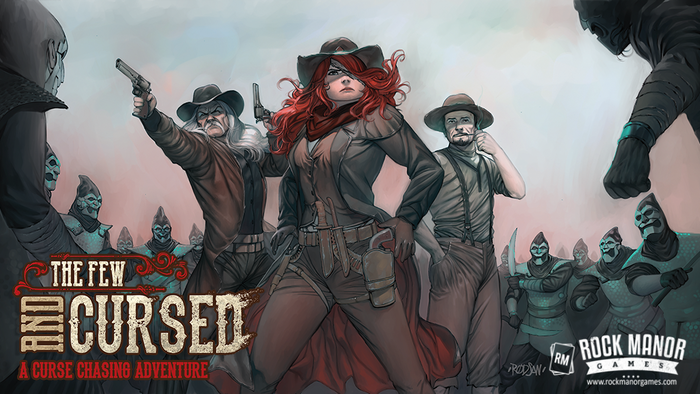Review copy provided by Chip Theory Games
Cloudspire is an asymmetrical strategy game from Chip Theory Games that continues the company’s push for premium-quality board games that started with Too Many Bones. With player-versus-player, cooperative, and solo game modes included in the base game, it’s a massive dose of tower-defense gaming that merges a lot of exciting gameplay mechanics into one adventure.
The world of Ankar will be a place of wonder for up to four players where variable powers, dice-rolling, area control, and kingdom-building all combine into one MOBA-inspired board game.
Cloudspire is a feat of production. This game packs modular neoprene game boards, heavy plastic unit chips, HD heat-transferred dice, as well as PVC cards and reference sheets all into one box. This isn’t the deluxe edition of the game. It’s the base game. It’s enough to make a gamer drool over the components.
But the gameplay is also something that must stand up to the test of time. It doesn’t matter if the components last for years if you don’t want to play the game.
And do I want to keep playing Cloudspire? Well, between the 16-mission campaign and Endless Mode for solo play, the eight missions for two-player cooperative, and the 2-4 player competitive mode, there are a lot of reasons to bring it back to the table.
STORY
High above the clouds, the floating realm of Ankar has existed in relative peace for centuries. Home to a number of creatures and beings, several isles have floated independent of each other. The isles are kept afloat and apart by a mysterious energy known as “Source.”
But it seems that Source is not limitless. As tensions rise over the availability of this precious resource, as-yet unsolved shifts in the isles’ stability have put all of Ankar’s nation-states on edge. Islands are beginning to crash into one another, and an all-out war for each island’s supply of Source is about to initiate chaos in the skies.
The setting feels familiar, given the current state of concern for global warming and environmental degradation. Rather than the manic and desperate world of Mad Max, a post-apocalyptic setting in which humans have already squandered resources and destroyed the planet, Cloudspire takes place in high-fantasy, right as the nations start to collide and fight over the remaining Source energy that fuels all life in Ankar. Peace is crumbling, wars are starting.
And players decide the fate of the races who populate Ankar. Who will rise above the rest and claim what’s left of the Source? Will it be the Narora? The Heirs? The Brawnen? Or maybe nature will favor the Grovetenders? Each faction has a chance of gaining control.
And Cloudspire does well to reinforce that greedy and frenzied search for Source by making it the income that players use to deploy their armies and the reward gained from defeating their opponent’s units. Players fight over the Source, just like the factions they control.
GAMEPLAY
There are a lot of things woven into the DNA of Cloudspire. The objective of the game is to defend your fortress while you weaken the opponent’s fortress. That’s achieved by building advancements for your fortress, constructing spires, recruiting and deploying units, and directing your heroes’ movements.
All basic units and mercenaries follow the shortest path to the enemy fortress and continue to press forward until defeated, damaging the fortress if within range. That gameplay mechanic reflects the style of tower-defense or MOBA games.
And you can engage with that gameplay experience through single-player, cooperative, or PVP play.
But an important factor to remember is that Cloudspire is an asymmetrical game. If you’re familiar with strategy games like Forbidden Stars and Smallworld or hidden movement games like Fury of Dracula, then you’ll be familiar with how roles or factions in the game function entirely different from each other.
In Cloudspire, that mechanic exists due to the four separate factions. There are expansions that provide additional factions, but the base game comes with the Brawnen, Heir, Narora, and Grovetender factions. Each one is a complex group of units and heroes with unique fortress advancements that encourages a particular playstyle.
Do you want to gradually strengthen all of your units and the fortress in a more traditional style of play? The Brawnen would work for you. Interested in experimenting with risk and reward with a religious dependence on Source and a connected infrastructure of spires? The Narora is a challenging and slippery faction to explore. Or maybe you’d prefer to commune with nature and summon your army from the world around you. The Grovetenders would align with that strategy. And if quick movements, fast attacks, and aerial dominance are your go-to in a fight, the Heir faction is ready to go.
The difficulty with asymmetric games is the high learning curve that players must get through in order to understand all the different factions, units, skills, special abilities, and upgrades. It’s a lot to take in.
But the strength lies in the replay value and in persistent satisfaction with the complexities of each game. Each player and each faction and each game brings new surprises, unexplored tactics, and a whole lot of fun.
So let’s jump into how Cloudspire plays.
The sequence of play is a simple progression that remains the same throughout all the waves of a game. Play moves like this: Event Phase > Income Phase > Market Phase > Build Phase > Prep Phase > Onslaught Phase > Back to Event Phase.
Players will discover what event will affect each wave of the game. Then the income phase will grant each player a number of Source that can be used in the rest of the wave. The market phase allows players to purchase equipment, mercenaries, spires, or Earthscapes—all of which can be used later that wave. The build phase enables each player to construct or upgrade a spire, place an Earthscape purchased in the market phase (this terraforms the land into new configurations), and advance the fortress to improve defensive and offensive capabilities. The prep phase bestows command points upon players that will allow them to deploy a certain number of minions and heroes from their barracks. And, finally, the onslaught phase is the movement, exploration, and battles that occur each wave once all other phases have completed. This is when the units deployed, the spires constructed or upgraded, and the locations explored will all happen. The Onslaught phase switches between players until all minions on the map are defeated. That triggers the end of the current wave and the start of the next one.
Sounds like a lot. And it is. But, I love games like Cloudspire. The complexity is appealing. The asymmetrical factions are exciting. And all of the possibilities mean that no two games are alike.
But I do recognize that they can be off-putting to many players. There are a lot of rules. And it can be a slow start to playing the game and learning all of the factions. Many games of this size have two rulebooks. One to make it through the first game without falling apart. And a rules reference booklet to cover all of the labyrinthine details that will govern future play.
Thankfully, Chip Theory Games is able to fit it all into one rulebook. And they’ve got detailed videos that will show you all of the nuances in the game.
But still. You might be apprehensive. I get it.
There’s a massive single-player campaign. There’s a cooperative game mode. There’s the more standard PVP game. It can be paralyzing. So just take your time and make your own path through the game. Play only two waves instead of four. Or if you didn’t get far enough into the battle as you hoped, lengthen it and add more waves on the end. Just play the campaign. Or play was a team with 2v2. Try out the Endless Mode.
There’s a lot, so take it one step at a time, and eventually, you’ll find the niches of Cloudspire that fit best with your play preferences.
Because there’s a lot to love. Promoting a hero after they defeat a particularly difficult Landmark minion is very satisfying. Creating a well-balanced stack of ranged and melee minions that dismantles your opponent’s deployment stack feels triumphant. Figuring out all the tactical possibilities with a faction is rewarding. And resetting the battlefield with new Earthscapes, dangerous spires, and well-laid plans is such a fun experience.
Cloudspire is a unique experience. And it’s got so much to offer players.
VISUALS
Chip Theory Games knows how to make sexy games. Modular neoprene game boards, heavy plastic unit chips, HD heat-transferred dice, and PVC cards and reference sheets. I’ve mentioned them already, but the components in the game are just so nice. It’s a joy to bring out of the box.
And the world of Ankar just makes it even better. The factions are so different, and the artwork on the plastic chips, faction sheets, and fortresses make the world come alive on the table.
It’s a luxurious experience with a well-organized box that makes getting the game out and putting it away a cinch.
REPLAYABILITY
One-player, two-player, three-player, four. I’m not even done, there’s so much more.
Kidding aside, Cloudspire has just a massive amount of content. With all of the different game modes, Chip Theory Games is guaranteeing that you can keep bringing the game to the table and there will still be more to explore.
It’s an expensive game. I’m not going to lie. But it’s worth the price when you consider all of the gaming that CTG has stuffed into one box.
WHAT IT COULD HAVE DONE BETTER
It’s done so much. If there was one thing that I would have wished for that’s helpful in asymmetric games, it would have been faction-specific booklets that each player can keep in front of them with FAQs, rules references, and other pertinent information. That helps players not have to constantly refer to the main rulebook during a game and it gives new players and veteran players alike confidence when they’re playing. It’s a great resource and one that I would have liked to see in Cloudspire. Other than that, though, I can’t complain. Chip Theory Games did a great job.
VERDICT
Cloudspire is a superlative strategy game that is a labor of love. Chip Theory Games have really outdone themselves with the product quality and volume of content inside this box. With so many game modes and innovative mechanics, I’m excited to bring it to the table more and introduce more friends to the world of Ankar.

























